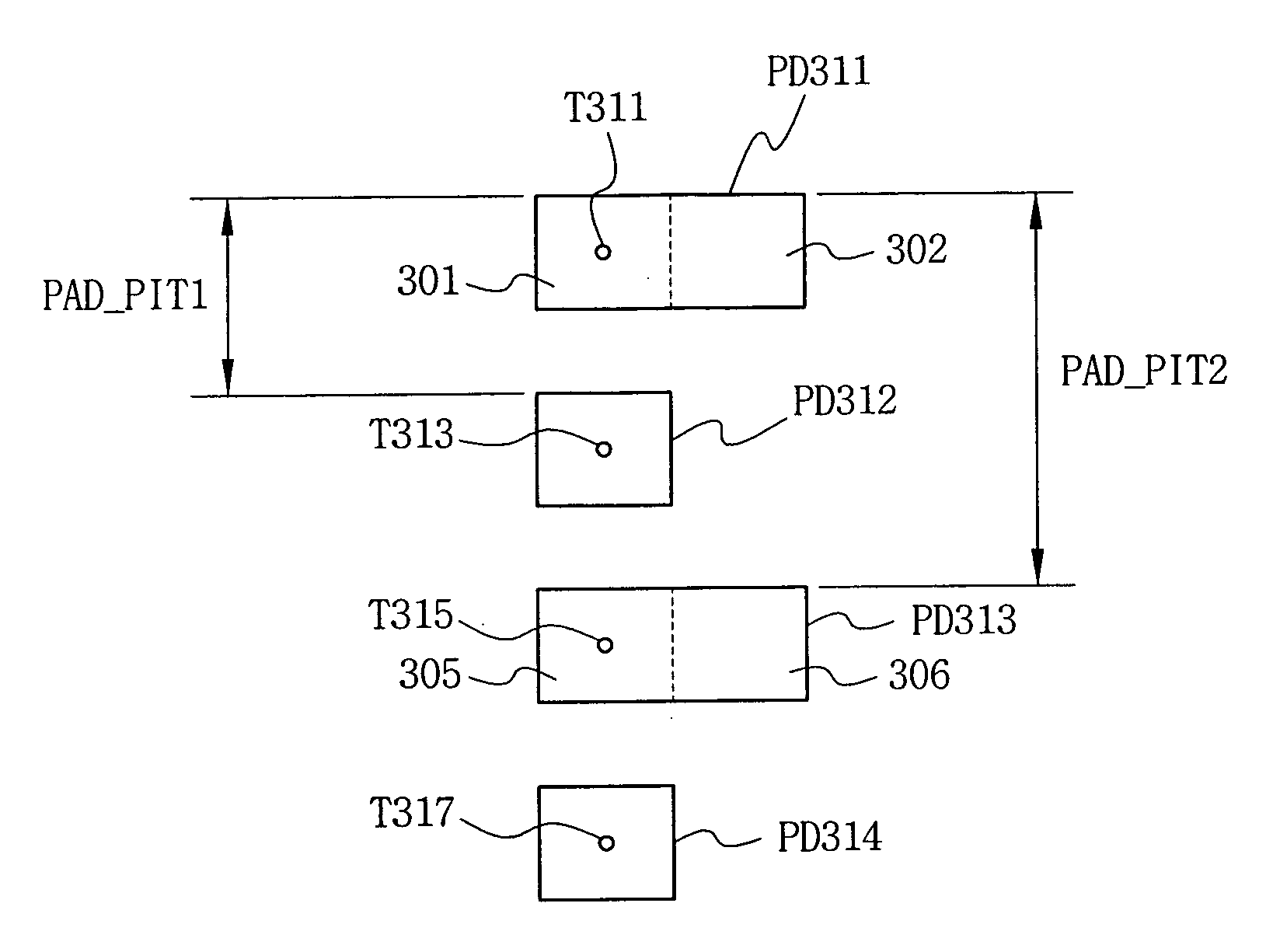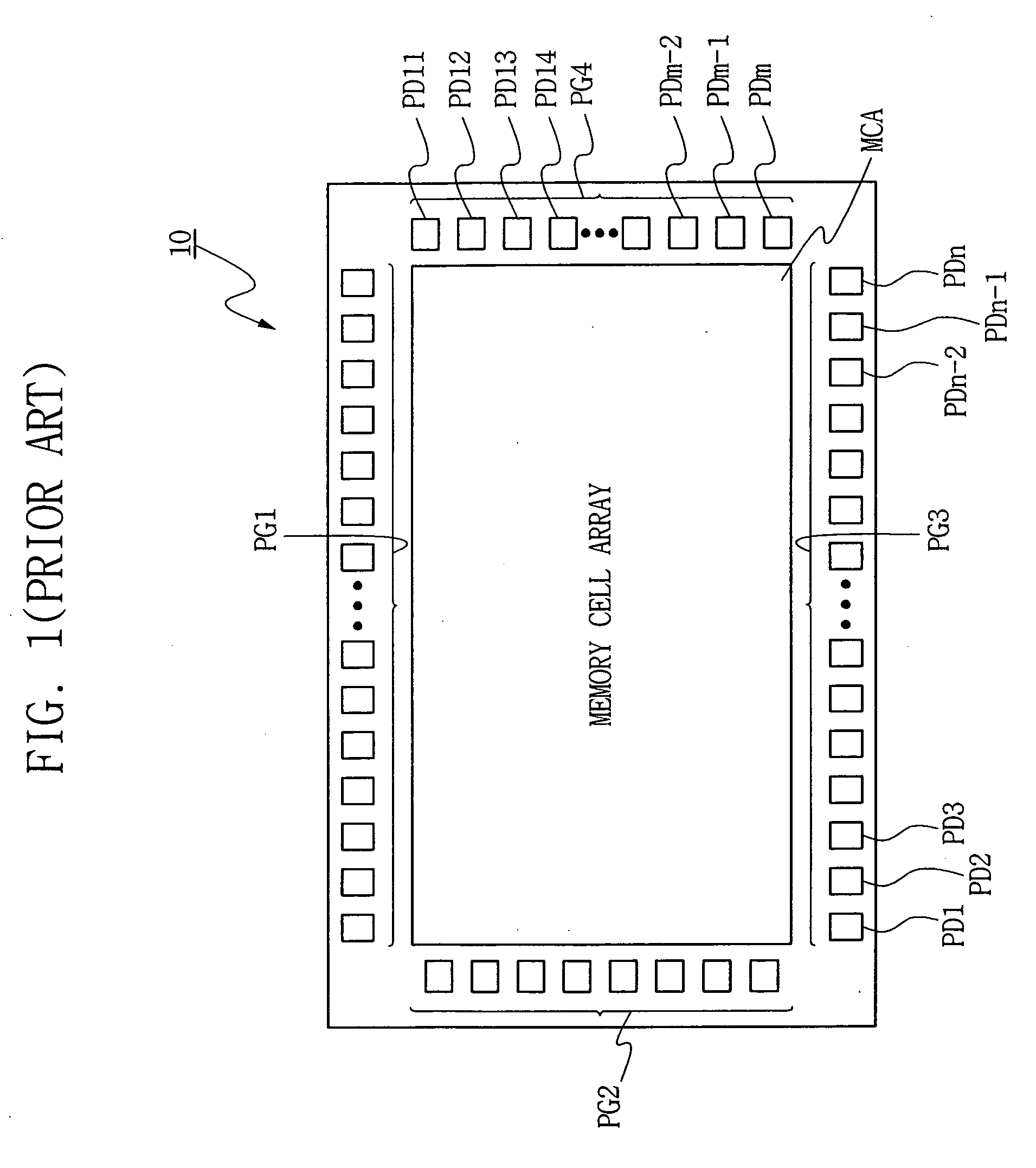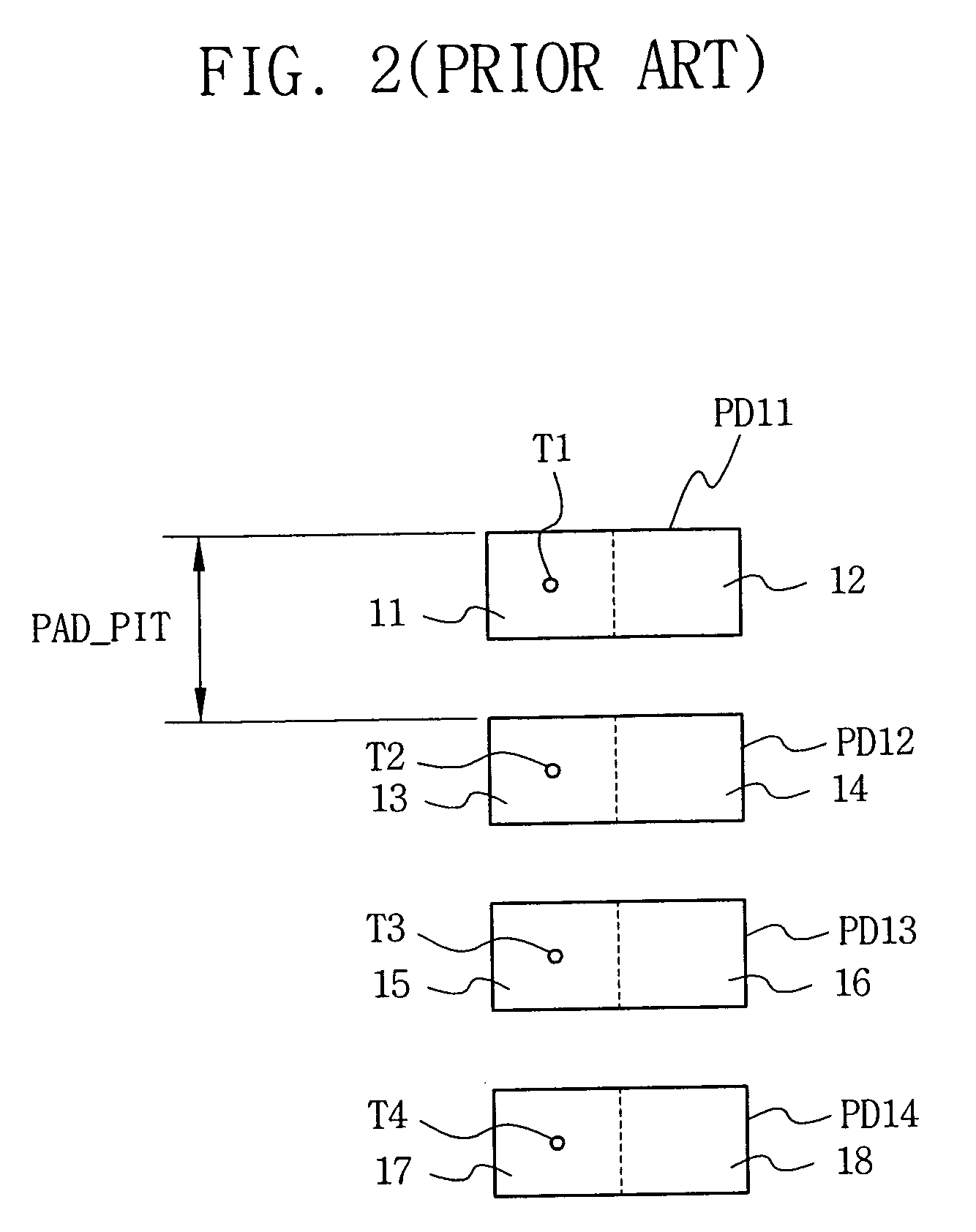Pad structure, pad layout structure, and pad layout method in semiconductor devices
- Summary
- Abstract
- Description
- Claims
- Application Information
AI Technical Summary
Benefits of technology
Problems solved by technology
Method used
Image
Examples
Embodiment Construction
[0069] The present invention will now be described more fully hereinafter with reference to the accompanying drawings, in which preferred embodiments of the invention are shown. This invention may, however, be embodied in different forms and should not be construed as limited to the embodiments set forth herein. Like numbers refer to like elements throughout the specification.
[0070]FIG. 5 is a schematic view illustrating a pad layout structure in a semiconductor device according to one exemplary embodiment of the invention.
[0071] Referring to FIG. 5, pads PD311, PD312, PD313 and PD314, and a pad pitch PAD_PIT1, PAD_PIT2, are shown.
[0072] In semiconductor devices, particularly in a semiconductor memory device as an example, pads formed in a pad region of the semiconductor memory device enable the semiconductor memory device to be electrically connected with external devices. Signals concerning command input and data read and write operations are input to the device, or are output ...
PUM
 Login to View More
Login to View More Abstract
Description
Claims
Application Information
 Login to View More
Login to View More - R&D
- Intellectual Property
- Life Sciences
- Materials
- Tech Scout
- Unparalleled Data Quality
- Higher Quality Content
- 60% Fewer Hallucinations
Browse by: Latest US Patents, China's latest patents, Technical Efficacy Thesaurus, Application Domain, Technology Topic, Popular Technical Reports.
© 2025 PatSnap. All rights reserved.Legal|Privacy policy|Modern Slavery Act Transparency Statement|Sitemap|About US| Contact US: help@patsnap.com



